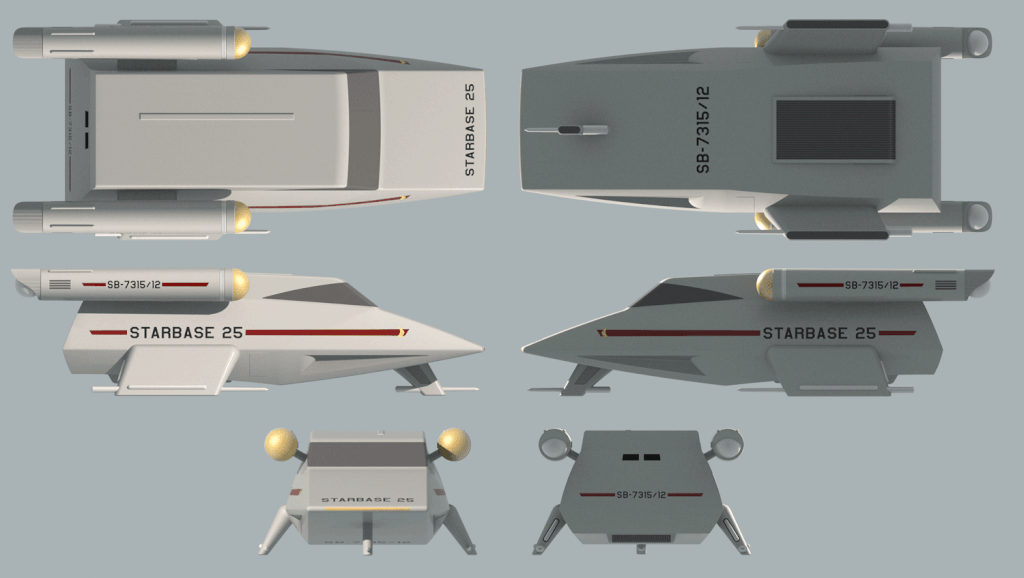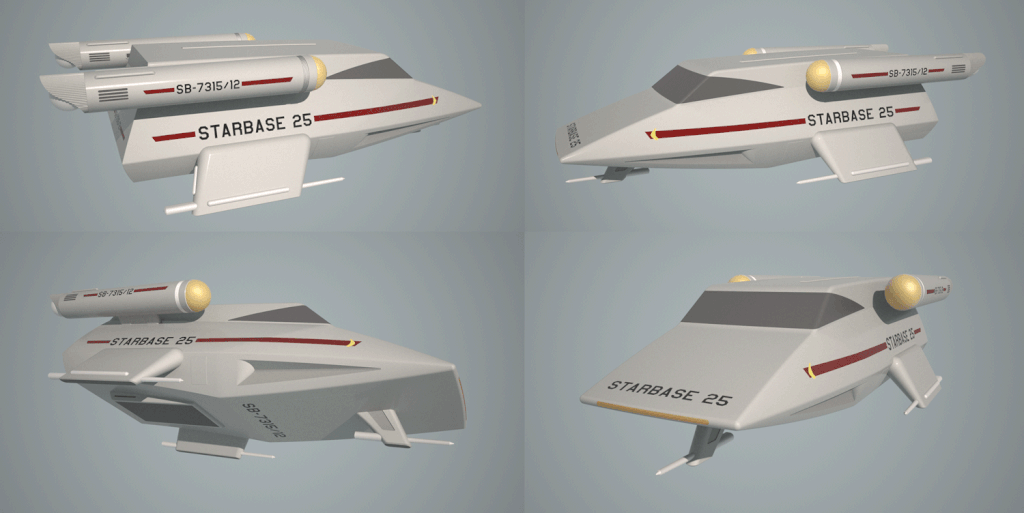This is a good example of Trek being more than the sum of the individual contributions in writing, acting, costuming or setbuilding. The Engineering set grew in proportion to the plot needs and the budgets - but Engineering as a story concept grew faster than that, becoming a vast maze where characters could hide indefinitely, and thus taking it the full circle back to the implicit story needs of "The Enemy Within", or indeed the very concept of an "engineering hull"...
Yes, the more we have Engineering, the less we have Hangar space for the poor shuttles. But we hit no hard limits yet even if we assume that all the minor and major variations of the Engineering set represented different rooms within the secondary hull. A dozen shuttles could still be stored with ease, say, in a multiple Ferris wheel arrangement at the unseen front end of the landing bay (giving justification for the misspelling "Hanger" in the signage!).
In any case, given that the buttons and levers all control machinery remotely, it doesn't really matter where the room is located, does it?
Very much agreed. Access to the ship's vast powers is through consoles, and some of that access is only through select consoles - but
any such "select" console will do, after which a malicious lockout is just a matter of hacking skills or user privileges. This holds true for all the spinoffs and would seem to hold for TOS as well... And it makes good real-world sense, too.
Riley may have chosen to do his sabotage from that particular corner of Engineering because
a) that's where he was sitting
b) that's where his user rights were in force
c) that's where his skills allowed him to achieve his goals
d) that's where there were no others to oppose him at the time
e) in his drunken state, none of the above really applied, but a) was kinda important because getting to some other place would have involved a lot of stumbling and crawling.
Timo Saloniemi





 , but next time, just start a new thread if one is that old. If it's absolutely necessary to refer to something in the old thread, then link back to it.
, but next time, just start a new thread if one is that old. If it's absolutely necessary to refer to something in the old thread, then link back to it.